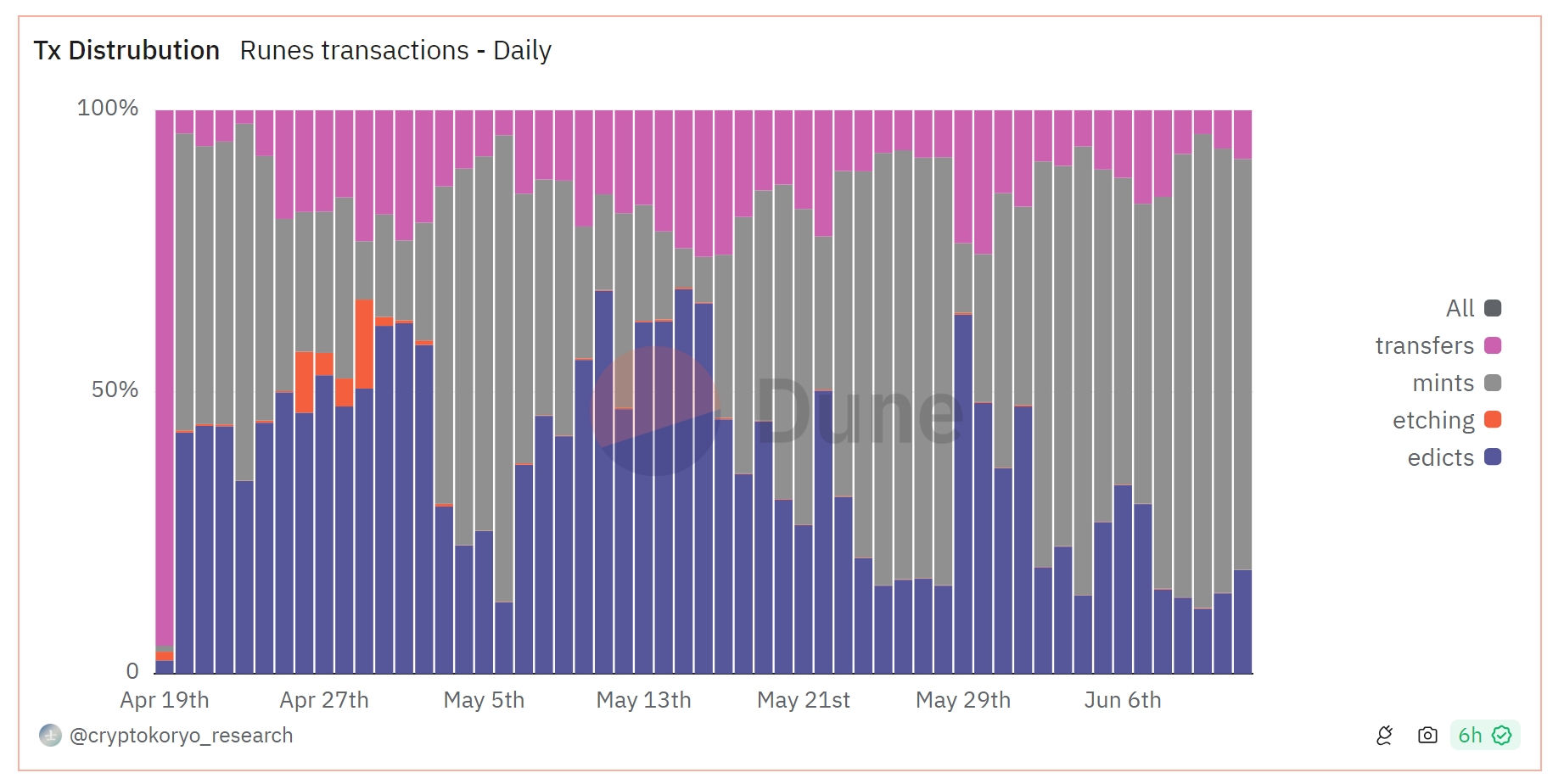Bitcoin often takes the lion’s share on the blockchain network, but among the competing standards of Bitcoin such as Ordinals, BRC-20, and Runes, one protocol stands out. On-chain activity serves as a good indicator of real-time market demand and overall community interest. Since its launch on April 20, Runes, a standard for creating tokens in the Bitcoin ecosystem, has dethroned the long-standing Ordinals and BRC-20 standards in terms of transaction share.
Runes Breaks Records
In 2024, the BRC-20 token standard occupied more than 50% of Bitcoin blockchain bandwidth for seven days. In contrast, Runes achieved the same success in just 10 days within three months of its release.

Runes took the lead in the Bitcoin blockchain ecosystem on June 10 and 11, when the standard occupied 51% and 53% of the network bandwidth, respectively. This indicates that investors are showing active interest in the ecosystem. However, BRC-20’s transaction share exceeded 50% on March 30 and has struggled to keep up with Bitcoin and its new standards since then.
What’s Happening in the Bitcoin Ecosystem?
The increase in network activity helps Bitcoin miners maintain their monthly revenues. Since its release, Runes has generated approximately 2,500 Bitcoin, equating to a market value of around 170 million dollars.

Most transactions on Runes can be associated with minting. To date, Runes has generated 1,377 Bitcoin for mining, 61 Bitcoin for transfers, and 1,011 Bitcoin for transaction fees. On April 23, the Bitcoin network recorded over 1.6 million unique transactions between senders and receivers, marking the highest number of confirmed payments.

The release of Bitcoin Runes played a significant role in the increase in the total number of transactions on the Bitcoin network. The tokens released during this process also garnered significant interest. Additionally, airdrop events continue to be a topic of interest in the Bitcoin ecosystem, encouraging active user participation.

 Türkçe
Türkçe Español
Español










